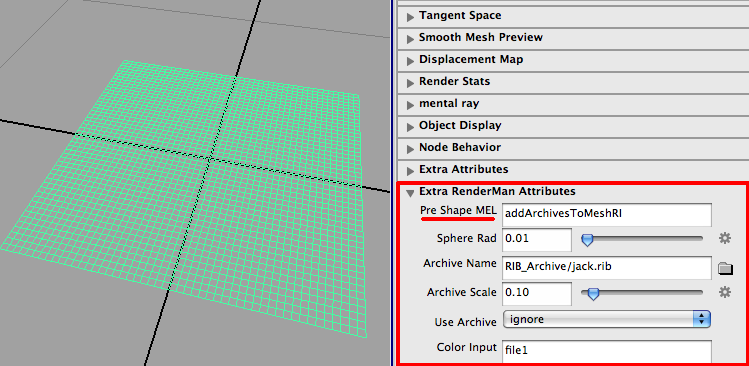|
import maya.cmds as mc
class Cache:
def __init__(self, width):
self.data = []
self.width = width
def reset(self, width):
self.data = []
self.width = width
def add(self, index, pos):
if len(self.data) > index:
xyz = pos[0:3]
self.data[index].append(xyz[0])
self.data[index].append(xyz[1])
self.data[index].append(xyz[2])
else:
self.data.append(pos[0:3])
def get(self, index):
return self.data[index]
def getFirstXYZ(self, index):
x = self.data[index][0]
y = self.data[index][1]
z = self.data[index][2]
return x,y,z
def getLastXYZ(self, index):
n = len(self.data[index])
x = self.data[index][n - 3]
y = self.data[index][n - 2]
z = self.data[index][n - 1]
return x,y,z
def length(self):
return len(self.data)
def update(self, tnode):
pnum = mc.particle(tnode, q = True, count = True)
for n in range(pnum):
pname = tnode + ".pt[%s]" % n
pos = mc.getParticleAttr(pname,at = 'position')
self.add(n, pos)
cacheDB = { }
#-----------------------------------------
def getSceneName():
name = mc.file(q = True, sceneName = True, shortName = True)
if len(name) == 0:
name = "untitled"
else:
name = name[:len(name) - 3]
return name
#-----------------------------------------
def getDataDir():
projPath = mc.workspace(q = True, rootDirectory = True)
return projPath + "data"
#-----------------------------------------
def bakeParticleCurves(tnode, start, end, width, curveType):
global cacheDB
if cacheDB.has_key(tnode):
cache = cacheDB.get(tnode)
else:
cache = Cache(width)
cacheDB[tnode] = cache
currFrame = mc.currentTime(q = True)
if currFrame == 1:
cache.reset(width)
if currFrame >= start and currFrame <= end:
cache.update(tnode)
if currFrame == end:
pathToCurves = getDataDir() + "/" + getSceneName() + "." + tnode + ".rib";
fileid = open(pathToCurves, 'w')
fileid.write('AttributeBegin\n')
fileid.write('Attribute "dice" "hair" [1]\n')
fileid.write('Attribute "stochastic" "int sigma" [1]\n')
fileid.write('Basis "catmull-rom" 1 "catmull-rom" 1\n')
for n in range(cache.length()):
xyz = cache.get(n)
if curveType == 'cubic' and len(xyz)/3 >= 4:
rib = 'Curves "cubic" [%d] "nonperiodic" "P" [\n' % (len(xyz)/3)
fileid.write(rib)
for i in range(len(xyz)):
fileid.write("%1.3f " % (xyz[i]))
rib = '\n] "constantwidth" [%1.4f] \n' % width
fileid.write(rib)
elif curveType == 'linear' and len(xyz)/3 >= 2:
rib = 'Curves "linear" [2] "nonperiodic" "P" ['
rib = rib + '%1.3f %1.3f %1.3f ' % cache.getFirstXYZ(n)
rib = rib + '%1.3f %1.3f %1.3f]' % cache.getLastXYZ(n)
rib = rib + ' "constantwidth" [%1.4f]\n' % width
fileid.write(rib)
fileid.write('AttributeEnd\n')
fileid.close()
|
